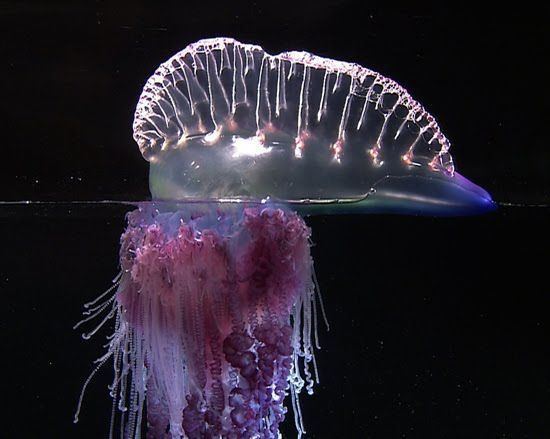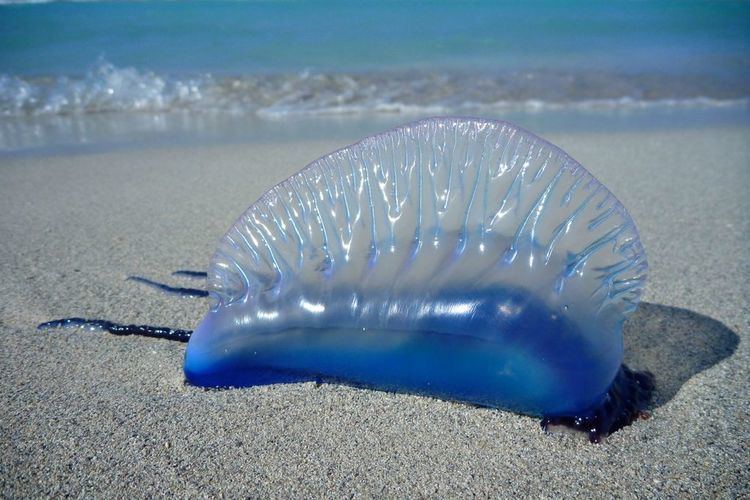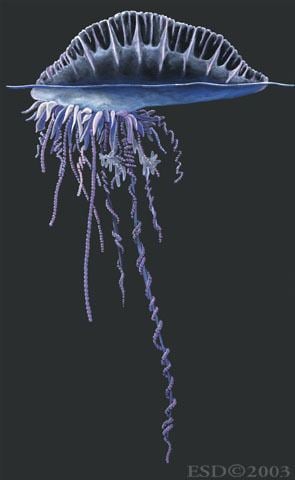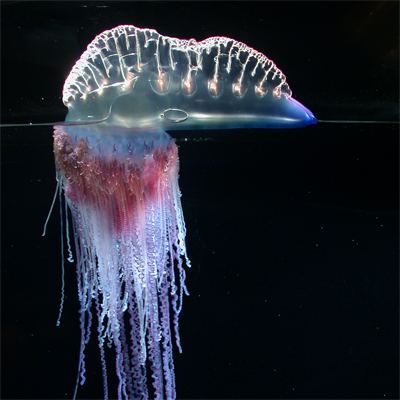Order Siphonophora Scientific name Physalia Rank Genus | Family Physaliidae Higher classification Physaliidae | |
 | ||
Lower classifications Portuguese man o' war, Physalia utriculus Similar Portuguese man o' war, Siphonophorae, Hydrozoa | ||
Pacific man o war physalia utriculus
Physalia is a genus of the order Siphonophorae, colonies of four specialized polyps and medusoids that drift on the surface of the Atlantic, Indian and Pacific oceans. Although these organisms look like a single multicellular organism, each specimen is actually a colony of minute organisms called zooids that have to work together for survival. A gas-filled bladder resembling a blue bottle provides buoyancy, and long tentacles of venomous cnidocytes provide a means of capturing prey. A sail on the float, which may be left or right-handed, propels Physalia about the sea, often in groups. These siphonophores sometimes become stranded on beaches, where their toxic nematocysts can remain potent for weeks or months in moist conditions. Both species of this siphonophore resemble a jellyfish in appearance, with their gas-filled float and cluster of polyps beneath, which can hang up to 30 or 165 feet below the surface of the sea.
Contents
- Pacific man o war physalia utriculus
- Portuguese man of war fragata portuguesa physalia physalis
- Diversity
- References

The species Physalia utriculus is given the common name Pacific man o' war to distinguish it from the more widely distributed and larger Physalia physalis, the Portuguese man o' war. The species are told apart by the size of the float (six inches compared to twelve) and by having a single versus several long fishing tentacles. No fatalities from envenomation are recorded for P. utriculus, in contrast to the larger species.

Physalia, commonly encountered on the shores of the Atlantic, Indian, and Pacific Oceans and observed in the open sea, stands as the most recognized species among siphonophores. This prominence is due to its accessibility, as the vast majority of siphonophores inhabit the cold, dark depths of the ocean, where direct observation in their natural environment requires the use of a submersible or remotely operated vehicle (ROV).

The genus was first described by Jean-Baptiste Lamarck in 1801.
Portuguese man of war fragata portuguesa physalia physalis
Diversity
The family Physaliidae is monotypic, consisting of only one genus, Physalia. The genus contains only two species.




